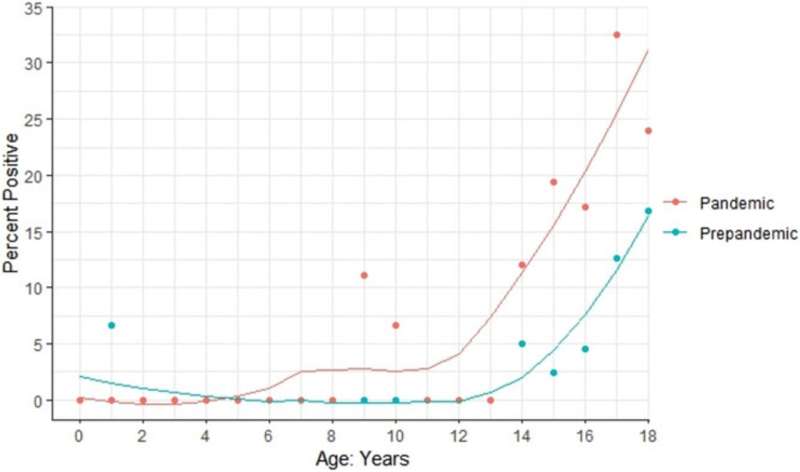This article has been reviewed according to Science X's editorial process and policies. Editors have highlighted the following attributes while ensuring the content's credibility:
fact-checked
proofread
Looking out for kids: A case for better pediatric trauma interventions

In the weeks following the onset of the COVID-19 pandemic, public health directives called for masking, social distancing, social isolation, and stay-at-home orders. Apart from the severe medical consequences as a direct result of the pandemic, the ensuing social isolation had far-reaching impacts on children.
The pandemic control measures affected the pediatric population by increasing mental distress, limiting physical activity, changing sleep patterns, and reducing emergency room visits. Unfortunately, the scope of pediatric trauma during the pandemic remains poorly understood, with studies even reporting contradicting findings. Some reports highlighted a higher incidence of gunshot wounds, motor vehicle accidents, self-injury, and abuse. Others described severe injuries coinciding with fewer pediatric admissions.
In a new study, researchers from the University of Nebraska Medical Center and the Children's Hospital and Medical Center in Omaha, USA, investigated the characteristics of pediatric trauma admissions during the COVID-19 pandemic. The team was led by Dr. Mark E. Hamill, an Associate Professor of Surgery at the University of Nebraska Medical Center.
"We were keen to provide more nuance and contribute to the ever-expanding literature on the characteristics of pediatric trauma during the pandemic. In particular, we focused on changes in pediatric injury patterns and alcohol use at our mid-western urban trauma center," says Prof. Hamill.
The study was published in the journal Pediatric Investigation
The group focused on patients aged less than 18 years old who were admitted to the hospital and analyzed data collected between March 1, 2020, and October 30, 2020. The records analyzed from the same period, especially during the three years before the pandemic, served as the control dataset.
The team uncovered some stark contrasts between the test and control datasets. First, pediatric trauma admissions increased by 67.5% during the pandemic compared to previous years. Second, the patients were also younger and suffered falls of a different nature. While falls doubled in number and reached 79 per year in 2020, they occurred from moderate heights between 1-6 meters rather than falls over 6 meters in height.
When asked about some of the more unique aspects of the results, Prof. Hamill explains, "We didn't see differences in transportation injury rates in the years before and during the pandemic. However, the cause of the injuries was skewed toward recreational vehicles rather than motor vehicle accidents. Notably, blood alcohol was significantly higher in patients aged between 14-18 years old evaluated at our trauma center during the days of the pandemic."
The team believes the broader applications of the work will bear fruit. The age group seeing the highest increase in trauma visits suggests that the children weren't following stay-at-home guidelines in Nebraska. A likely scenario was that teenagers were engaging in more outdoor recreational activities and doing so under less supervision. Notably, Nebraska didn't issue a stay-at-home mandate, and the data suggests this could be linked to the propensity to use alcohol and engage in activities with a higher risk of injury.
"The higher incidences of younger patients, positive blood alcohol, and recreational injuries in pediatric trauma admissions during the pandemic suggest that preventive measures need fine-tuning," says Prof. Hamill, "First, targeted interventions that curb alcohol use are needed. Second, and in light of possible future events that might lead to school closures, the restrictiveness of control measures needs to be assessed for unintended consequences."
More information: Neesha S Patel et al, Kids gone wild—Alcohol use and patient characteristics in pediatric trauma during the coronavirus disease 2019 pandemic, Pediatric Investigation (2023). DOI: 10.1002/ped4.12388




















